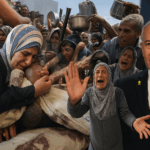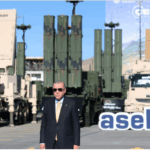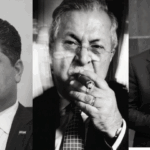A drive to consolidate Druze armed factions in southern Syria gathered momentum this week as the Suwayda Military Council said it is ready to join a clerically guided umbrella formation known as the “National Guard,” days after more than two dozen groups declared a full merger under the initiative.
The moves follow last month’s failed bid by Syrian government forces and allied tribal militias to reimpose central control over the province. A fragile ceasefire since then has left pro-government units holding pockets of the northern and western countryside, while most of the province remains under local Druze control. Commanders and activists say the July fighting exposed costly gaps in coordination among a large number of factions, prompting renewed efforts to unify command.
What the statements say
On Aug. 23, a wide consortium of Druze formations announced a “complete merger into the National Guard forces,” describing the formation as “the official military institution representing the sect” and pledging “absolute compliance” with the decisions of the spiritual leadership represented by Shaykh Hikmat (Abu Salman) al-Hijri. The text cast recent losses as “battles of dignity and honour,” vowed to defend civilians and religious sites, and said the sacrifices of “martyrs” would sustain the struggle until its goals are achieved.
Signatories span a broad cross-section of Suwayda’s armed landscape, including groups long known for opposition to Damascus such as the Local Forces, the Counterterrorism Force, and Quwat Shaykh al-Karama, alongside numerous community defense formations. Among the listed names: Quwat Nisr al-Jabal, Quwat Nashama al-Jabal, Quwat Nusur al-Jabal, Tajammu‘ Abna’ al-Jabal, Saraya al-Jabal, Quwat al-‘Aliya, Quwat Toud al-Jabal, al-Qahirun, Quwat Fursan Hamza, Quwat Shams al-Janub, Quwat al-Fahad, Humat al-Thughur, Quwat al-Sultan, Quwat Dir‘ al-Lajat, Druze Protection Units, Jaysh al-Muwahhidin, and others.
On Aug. 26, the Suwayda Military Council said it had answered al-Hijri’s call positively and was “ready to join the National Guard Forces,” calling the step a prudent response to current threats and a reflection of the community’s will to defend its land and dignity. The Council pledged to “mobilize all capabilities,” continue protecting civilians and sacred sites, and remain “loyal fighters” in defense of the unity, rights, and lands of the Druze community.
An initiative older than the July battles
Organizers and figures involved say the “National Guard” concept predates the July assault. It has served as a rallying point for formations that acknowledge al-Hijri’s authority, drawing in members from varied backgrounds — including some previously linked to the National Defence Forces during the early civil-war years as well as factions that emerged in explicit opposition to Damascus.
People close to the clerical leadership stress that the consolidation should not be read as alignment with the central government. Rather, it reflects a spectrum of Druze positions, many skeptical of Damascus’s intentions. Some factions demand sweeping political change — up to and including a fundamental rewrite of the constitution — as the basis for any settlement; others have lost faith in remaining within Syria at all and openly discuss an independent Druze entity.
Why it matters
Supporters frame the National Guard push as the most serious attempt in years to impose a unified defensive posture on Suwayda’s fragmented armed scene, close coordination gaps revealed in recent fighting, and strengthen the province’s negotiating hand. A more coherent structure could also standardize rules of engagement, streamline logistics and recruitment, and deter further unilateral attempts by Damascus or allied militias to alter the status quo.
Still, major tests lie ahead: translating pledges into an enforceable chain of command; integrating disparate units with different leadership cultures; and balancing hardline and pragmatic currents inside the coalition. The degree of operational unification — whether via a joint operations room, shared communications, and consolidated supply lines — will determine how much practical change the merger brings on the ground.
The situation on the ground
For now, the ceasefire holds unevenly across front lines. Pro-government forces retain positions in segments of the north and west, while local Druze formations administer most towns and rural areas elsewhere. Checkpoints, ad-hoc mediation, and local notables help manage incidents, but flare-ups remain possible as each side probes red lines and the National Guard project evolves.





